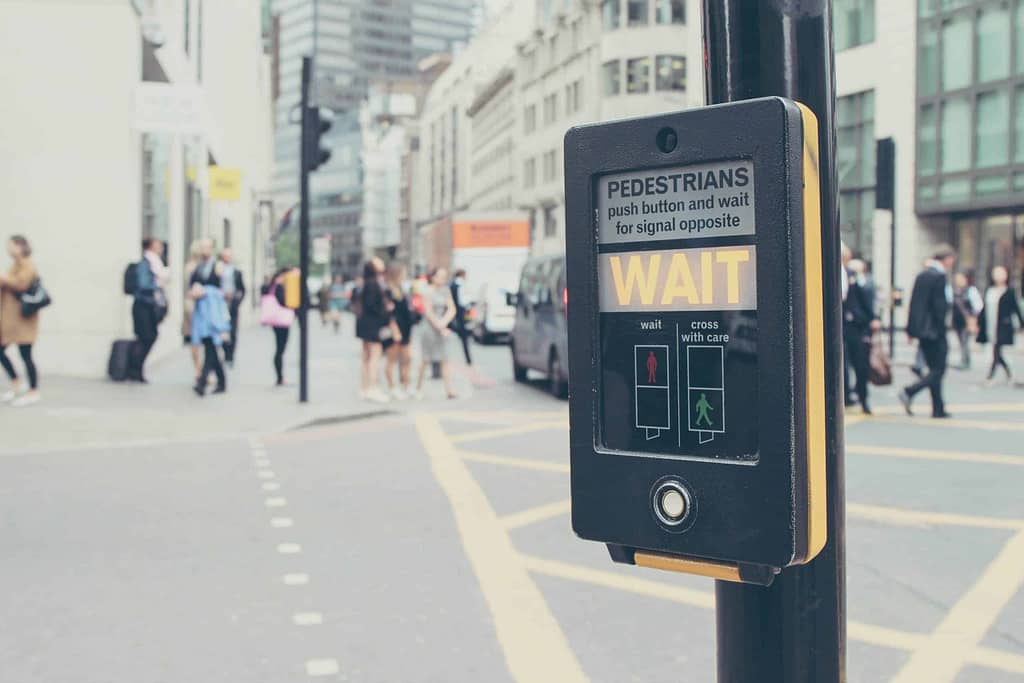Co-authored by Roger Brook and Mike Griffith
Adaptive Traffic Signal Control technologies are making an impact on traffic operations (such as reducing congestion and delay) and on carbon emissions. However, there have been few advances in the traffic systems management industry that have enabled signal control technologies to also make a positive impact on traffic safety by reducing road user conflicts. With the development of low-latency edge computing technologies and research on using machine learning models to predict severe conflicts, there are positive indications that signal control technologies can be both smarter and safer.

Adaptive Traffic Signal Control Systems are becoming a “need-to-have” technology for transportation agencies and TSMO professionals to improve traffic operations by combining state of the art detection technologies with traffic signal timing to match real-time traffic demand from data that is sourced from both fixed and mobile sensors, probes, and from signal timing models.
To date, the primary use case for these technologies has been to adjust signal timing to improve traffic flow, reduce delay, congestion, and carbon emissions. Adaptive systems can leverage AI, cloud-based computing, edge-based and vehicle sensors, and big data.
However, most agencies have not been able to fully leverage this road-user detection data to capture greater gains for safety from adjusting traffic signal control systems.
Road Safety Traffic Systems
Advanced Mobility Analytics Group is developing the capability to inform both adaptive and responsive traffic signal control systems with real-time (milliseconds) and highly reliable safety and operations data based on road-users’ activity. The objective of our technology is to inform signal control systems in real-time with trusted safety data that can be operationalized to reduce crashes and save lives.
The critical elements of our technology include:
- research-based machine-learning conflict/crash prediction models, running at the edge or at a Traffic Operations Center, that can accurately detect, track, and forecast trajectories and crash risks between multiple road users including vehicles and pedestrians/bicyclists in real-time from video or LiDAR data, and
- communicating data in real-time to inform any of the major adaptive and responsive traffic signal control systems and connected signs at the intersection to respond to and mitigate safety risks.
There are a growing number of use-cases that transportation professionals have identified for technology aimed at improving both safety and operations at their signalized intersections. For example, our technology can use video or LiDAR data to detect elderly, impaired, or other pedestrians that may be at risk of a conflict when crossing at a signalized intersection and notify the signal control system to extend the crossing phase or to extend the red signal phase. for conflicting traffic movements during pedestrian extension. Another example is to automatically activate a blank-out sign to override permitted left turns when pedestrians need more clearance times to avoid a conflict.
There are technical challenges to using real-time detection to enable safer signal control systems. They require the ability to build accurate conflict prediction models, train and accurately detect the presence and trajectories of multiple road users, including those most at risk, and the capability to communicate with multiple signal controller software and hardware systems at a compelling price. The AMAG SMART Platform leverages the power of the AWS Cloud to provide a suite of products hosted on a cost-effective and scalable serverless architecture.